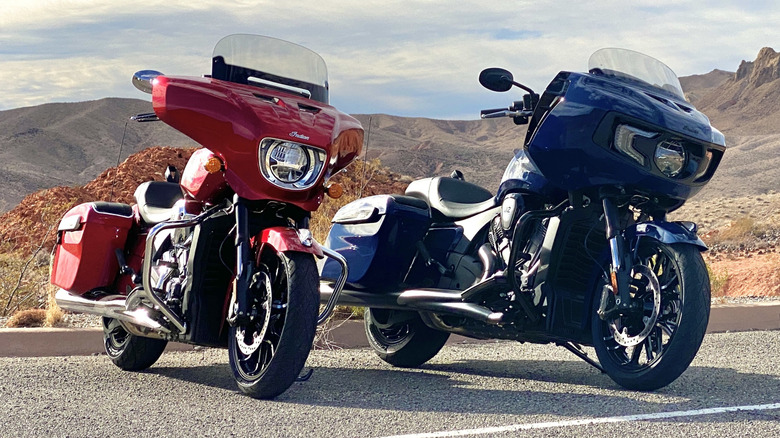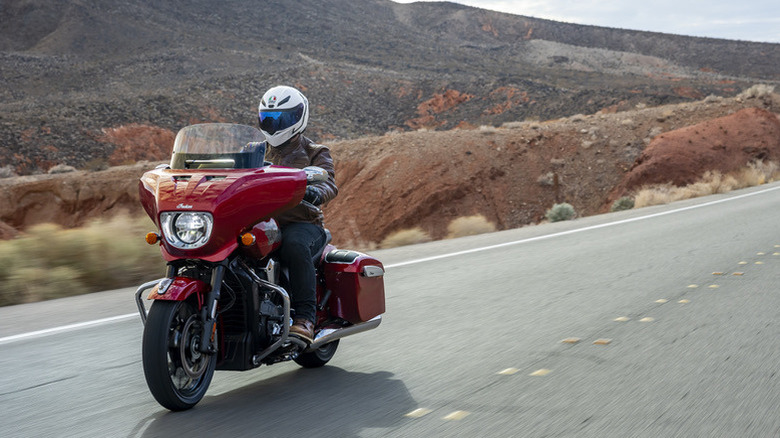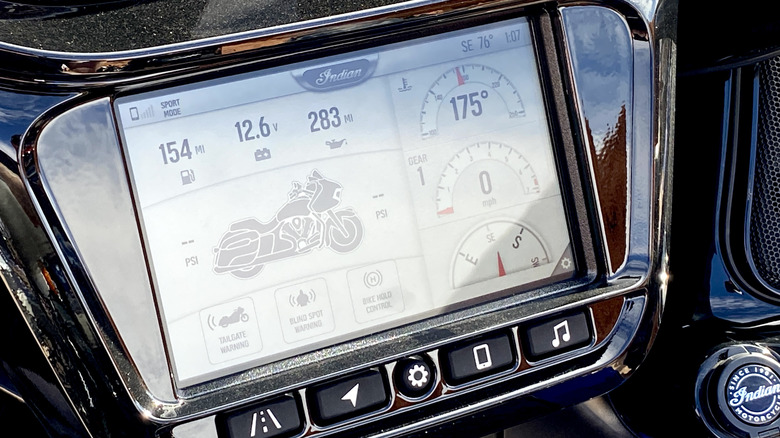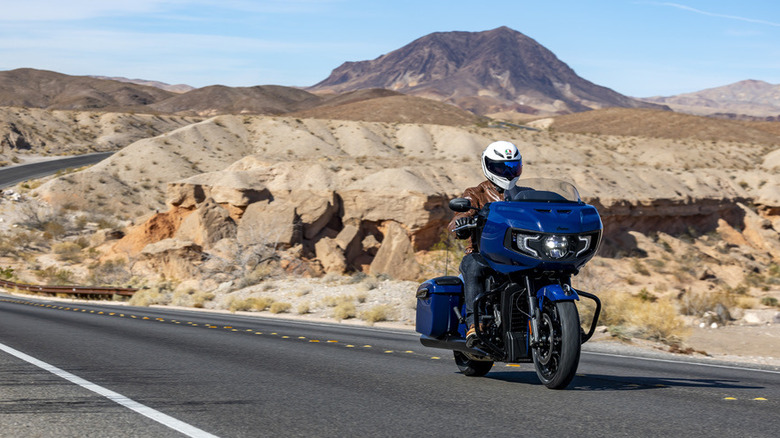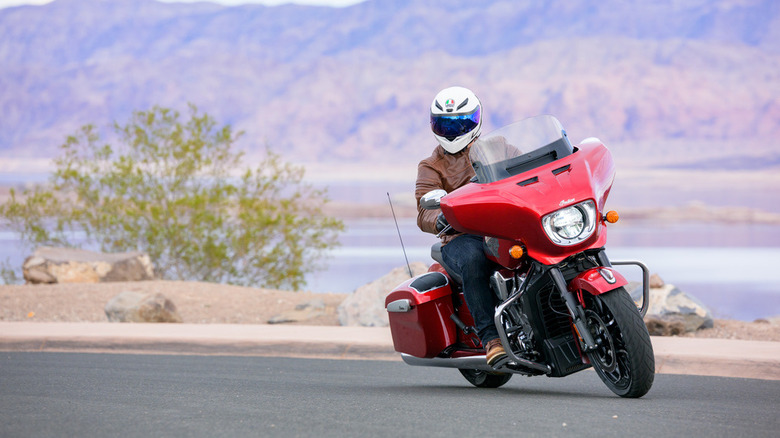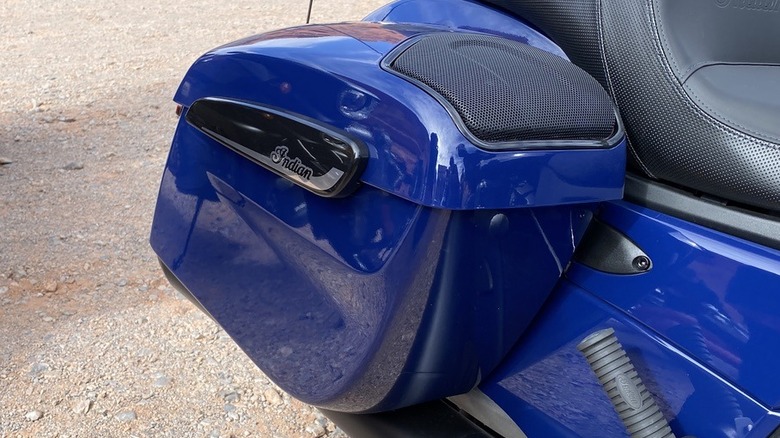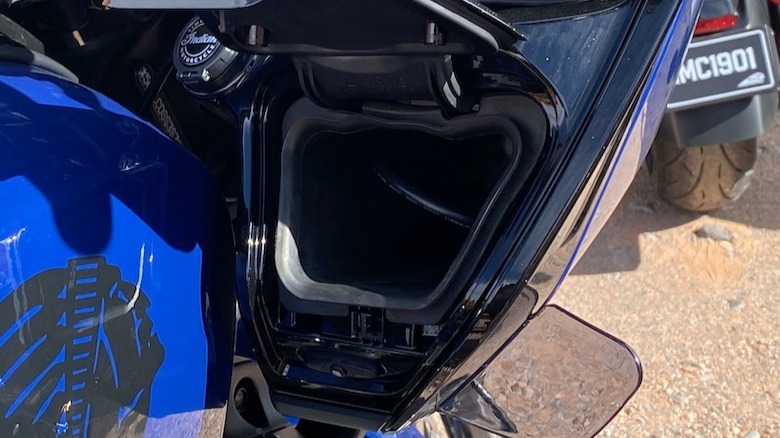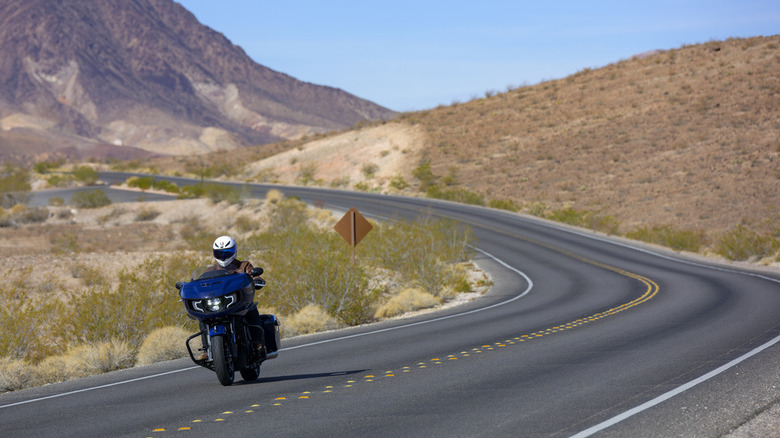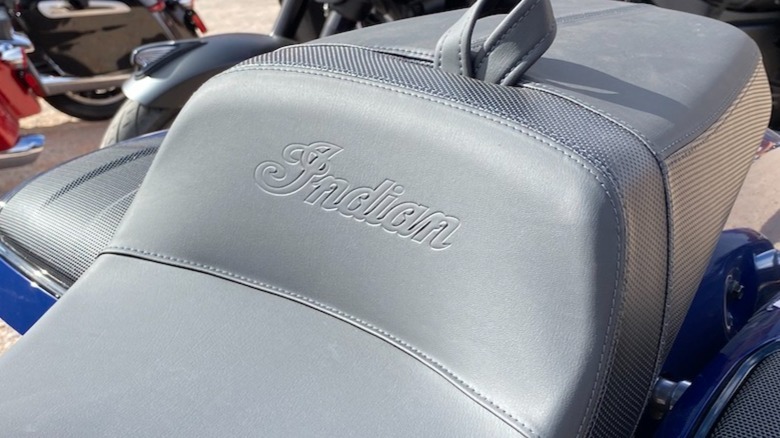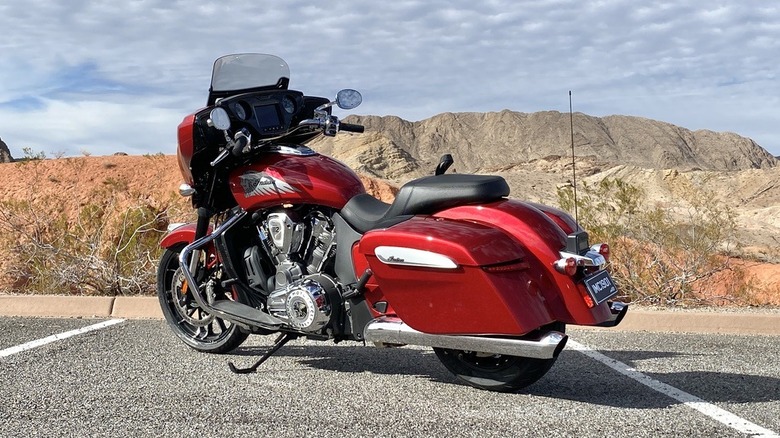2025 Indian Chieftain & Challenger PowerPlus 112 First Ride: More Than Just Extra Torque
Some people come to Las Vegas for the gambling or for the shows, hoping to win big or see fantastical displays on big stages. Others come for the lazy rivers, drinks with little umbrellas, or the exclusive meals prepared by celebrity chefs in high-end restaurants. There's the Vegas Strip, the Sphere, and even F1 racing has made its way to center stage in Nevada's most populous city. I hopped on a flight bound for McCarran airport, however, hoping to avoid the crowds.
The folks at Indian Motorcycles recently debuted the PowerPlus 112 engine, upping power levels and touting improved responsiveness in several of their bikes. To properly showcase just how well this engine fit their baggers, they invited me (and a few dozen other riders) out to Las Vegas to test out the new bikes. Technically, our roadtrip took us out into the desert, through the mountains and state parks outside of Vegas, where the asphalt moves with the undulating landscape and the view stretches across a vast horizon. If you ask me, it's a much better experience than losing my shirt at a blackjack table and overeating at the nearest buffet.
Power across the range
Specifically, I went to Vegas to ride the Challenger and the Chieftain, two of Indian's Bagger bikes. Both are still available with the 108 cubic-inch V-Twin (also known as a PowerPlus engine) that offers 122 horsepower. My time was spent riding bikes with the new PowerPlus 112, which bumps things up to 126 hp.
According to Indian, the powerband of the new PowerPlus 112 engine is improved over previous V-Twins and is now better than most rival engines. Instead of dropping off a power and torque cliff after around 4,000 rpm, the PowerPlus 112 is designed to better deliver on the way to the redline, improving acceleration and offering peak power at higher RPMs. For the most part, that seemed to be the case.
The torque provided by the PowerPlus 112 was impressive. With both the Challenger and the Chieftain I rode, I could easily dig into the throttle in third gear while only going about 20 mph, and speed all the way up to the mid-60s range. I could also launch from zero, rip through a few gears and not feel power or torque run out as speeds climbed. There was certainly a significant difference in performance before and after 3,600 rpm (where the PowerPlus 112 reaches a peak torque of 133 lb-ft) but nothing I'd write a strongly worded letter about, and certainly nothing to make those buffets look any more appealing.
Modern tech features add appeal
On top of the new engine, these big Indian bikes get big new tech features too. Blind spot monitoring, rear-collision warning lights, tailgate monitoring, and hill hold are all now available on various configurations of Indian's bikes, and are standard with the 112 powertrain. The blind spot monitoring, like the systems already equipped on many cars, lights up a spot next to your mirrors if a vehicle is in your left or right blind spot. Why not turn your head and look? Sure, you can do that too, but this feature adds awareness of your surroundings in general – which is never a bad thing. Riding both bikes, it was relatively conservative in its alerts, never giving me a false positive.
Rear collision warnings light up the taillights when the Indian's Bosch-supplied radar system senses a fast-approaching car or motorcycle from the rear. It's something the rider doesn't notice, but it should help keep riders a bit more visible: another plus by any standard. Tailgate monitoring pops up a small warning for riders when someone is close behind, but it's barely noticeable.
Finally, the hill hold feature should be a welcome addition for any rider that's ever stalled on an incline. This feature keeps the bike from rolling back on a hill before you set off, keeping you from embarrassing yourself in front of all your friends. If you don't like any of these features, they can all be turned off via Indian's 7-inch Ride Command touchscreen.
Ride comfort is tough to match
Compared to stiffer, sportier bikes like the Scout, riding the Chieftain and Challenger feels like piloting a plush recliner. Both bikes are unbothered by almost all small road imperfections and they shrug off the bigger ones, too. Doing 200 miles in the saddle of an Indian bagger is no tough task, even if the roads are rough.
A few of the other folks testing out the Chieftain and Challenger had issues with the riding position, commenting that the handlebars were higher or further away than they'd like, but I found–for my 5-foot-9 frame–they were placed well within reach. The Challenger's windscreen height and my AGV K1 helmet seemed to cause some buffeting issues, but none of the other riders had the same complaint, so I chalked it up to gear choice.
Blasting tunes on the open highway was a great way to stay engaged with the ride. I kept my phone in my front jacket pocket for the entirety of both rides, neither bike experiencing any connection issues. With motorcycle stereos, you have to adjust your expectations for audio quality– especially at speed–but the optional 400-watt PowerBand systems installed had impressive performance. I could clearly hear my music at 80 miles per hour, with easy volume adjustment via the hand controls or the touchscreen.
Can these baggers handle corners?
Both the Challenger and the Chieftain can handle most corners you throw their way, providing those corners aren't too tight. Most of the turns we came across in the Nevada desert were of the long, sweeping variety. Through those long sweepers, both bikes felt like they were floating effortlessly. While neither bike felt particularly engaging or sporty, it was still a joyful experience. At speed, both bikes felt light enough to change direction in a relative hurry.
Braking was a bit more of an exercise in patience. The dual Brembo front calipers and the large 320mm rotors give the Chieftain and Challenger a good amount of stopping power, but the bikes are heavy–over 800 pounds each–so you won't want to follow cars or bikes ahead too closely. The brakes are electronically linked, so pressing the foot brake or pulling on the hand brake lever will slow things down using both the front and rear calipers, at least when you're above 13.4 miles per hour.
Big on storage
As you'd expect from a bagger, there are lots of places to store your gear when you're riding these Indian bikes. The rear remote-locking hard-shell saddlebags meant I could bring along extra gloves, a cleaning rag for the windscreen, and a few other odds and ends. It also meant I could shed layers as the day got warm, then put them back on as things cooled down in the evening.
Total storage was 18 gallons between the two, and they could easily fit large items like laptop bags. Need to bring along even more stuff? No problem. There are several different storage options available including various size-and-shape trunks.
Storing your phone in the pockets provided by the front fairing is probably what the designers had in mind when they put the USB outlets there. On the Chieftain, however, the small slit atop the fairing is very cramped: modern phablet-scale phones won't fit. The Challenger's larger fairing has a lower pocket that's much larger, and had no problem with my big-screen iPhone.
In it for the long haul
Riding across the Nevada desert, blasting music from the Chieftain's onboard stereo, I totally understood the appeal of these big, comfy bikes. I typically ride sport bikes, and while sometimes I venture out into the dirt, long-distance cruising isn't usually on my list of weekend activities. The relaxed dynamics of baggers and cruisers just don't appeal to my sensibilities. Engaging cruise control, settling into the comfortable and supportive seat, and taking in the wide open spaces, though, all made a lot of sense.
With 5.1 inches of front suspension travel and 4.5 inches of travel in the rear, both of the bikes that I rode were able to absorb the cracks and imperfections from the sun-bleached desert highways. The well-padded and supportive seats kept me extremely comfortable, even after hours on the road. The 6-gallon fuel tank was enough to go pretty far without a fueling stop, and the stereo certainly kept me entertained on the legs between gassing up. Add it all up and there's definitely an undeniable appeal.
2025 Indian Chieftain and Challenger Verdict
Big, well-equipped rides like the Chieftain and the Challenger aren't cheap. This sort of comfort and style will cost you around the same as a well-equipped compact sedan: with the PowerPlus 112 engine and the optional Powerband audio, both bikes I rode were priced at over $30,000. That's similar to a well-equipped Harley Davidson Street Glide, too.
Thankfully, there are less-expensive versions of both bikes with the only slightly less powerful PowerPlus 108 engine saving a significant amount for frugal buyers and, for what it's worth, both bikes I tested came with some pretty hefty optional equipment sheets.
Standard features like LED lights and signals, Apple CarPlay compatibility, selectable ride modes, and a 2-year warranty are all part of the deal. The Chieftain, with its fork-mounted fairing and slightly slimmer looks, would be my choice between the two bikes. On top of having a bit more classically styled front end, it's also the less-expensive bike between the two that I rode, at least at the low end of both bikes ranges. No matter what sort of style you prefer, the newest batch of Indian baggers are the kind of bike that you'll want to spend an endless summer on, whether it starts, or ends in the Nevada desert.
